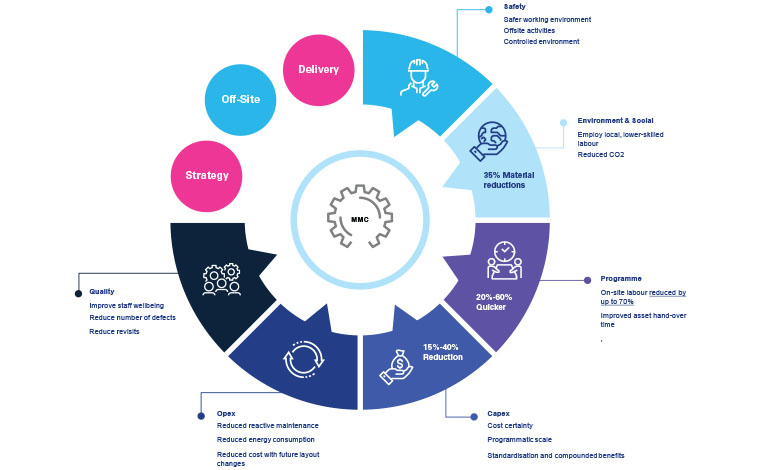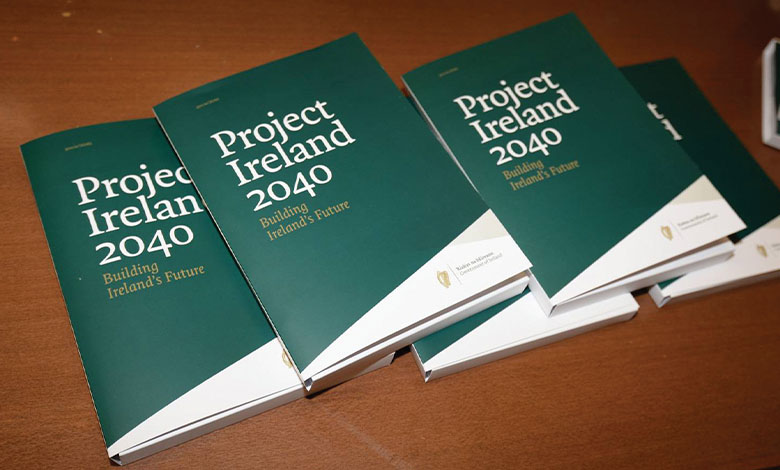
Delivering affordable homes
31st October 2023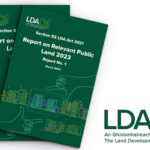
LDA Report on Relevant Public Land
31st October 2023How did the eviction ban impact homelessness in Ireland?

The eviction ban in place from November 2022 until the end of March 2023 did not lead to a reduction in homelessness numbers, but monthly increases in total numbers did slow and the number of homeless children decreased during the period.
Minister for Housing, Local Government and Heritage Darragh O’Brien TD told eolas Magazine in June 2023 that “certainly some elements” of the increase in homelessness was due to the lifting of the eviction ban brought in by the Residential Tenancies (Deferment of Termination Dates of Certain Tenancies) Act. This was confirmed with the publication of government homelessness data for April 2023, which showed that homelessness had increased in total numbers and among both adults and children.
The 12,259 total number of homeless people recorded in April 2023 in the immediate aftermath of the ending of the ban was, at the time, a record for the State and a 2.3 per cent increase on the preceding March. 8,516 adults were recorded as homeless, a 1.8 per cent increase, and 3,594 children were recorded as homeless, a 3.5 per cent increase. While overall data for the period of the eviction ban shows that the measure did not stop the increasing number of homeless people in Ireland, it did slow the rate of increase from month-to-month and decrease the number of homeless children in the State. Comparing March 2023 and April 2023, the monthly increase rate in adult homelessness stood static at 1.8 per cent, but the growth rate in child and total homelessness rose from 2.9 per cent to 3.5 per cent and 2.1 per cent to 2.3 per cent respectively.
March 2023 was itself an anomaly within the five months the eviction ban was in operation. The ban came into effect on 29 October 2022, meaning that November 2022 was the first operational month. While it is true to say that homelessness increased from November 2022 to March 2023, sharp increases in March skew some of this data. Child homelessness, for example, slowed its rate of increase from 4.1 per cent in October 2022 to 0.4 per cent in November 2022 and then recorded decreases in December 2022, and January and February 2023 before once again increasing in the following March. There had been 3,494 homeless children recorded in November 2022, which fell to 3,373 in February 2023, but rose to 3,472 in March 2023. Overall, child homelessness decreased by 0.6 per cent in the five months of the eviction ban.
Adult homelessness in the same period rose by 5.8 per cent, with the overall homelessness numbers increasing by 3.9 per cent. In comparison, May 2022 to October 2022, the six months immediately preceding the ban, showed increases of 8.5 per cent, 14.9 per cent, and 10.4 per cent in adult, child, and total homelessness respectively. October 2022 showed the sharpest of increases during this period in each of the adult, child, and total categories.
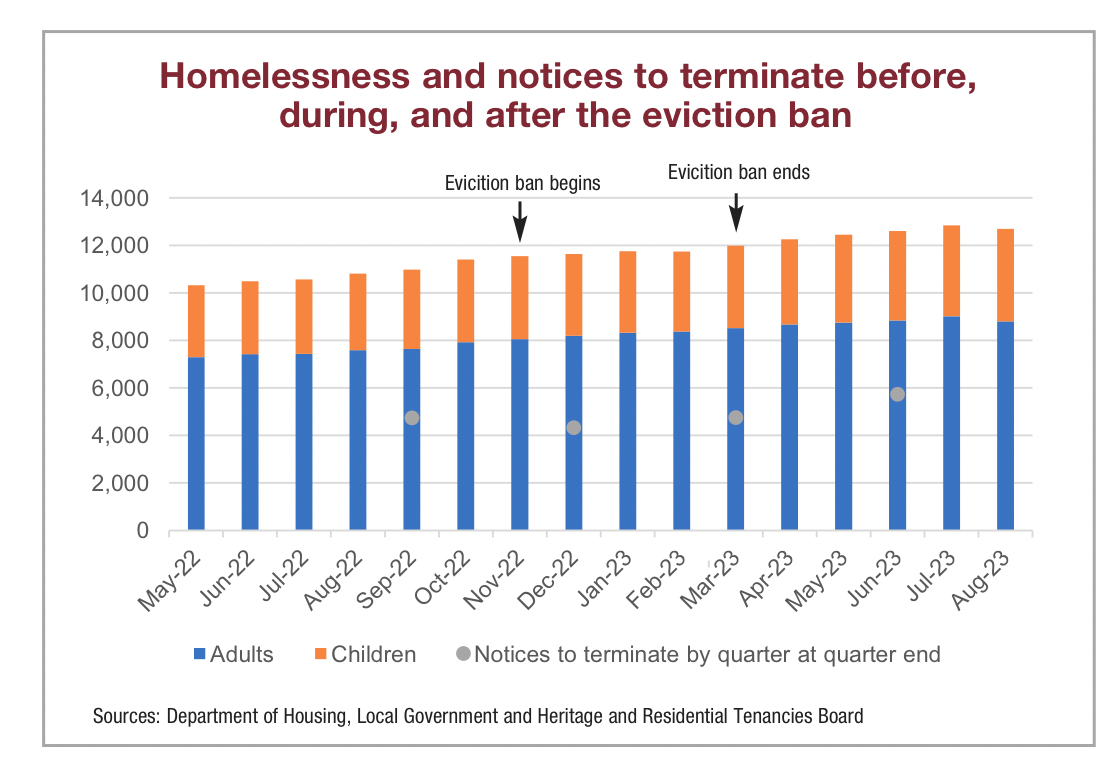
Notices to quit
It is not possible to calculate exactly how the number of notices to quit directly correlates to homelessness figures due to the fact that data on notices to quit served by landlords, collected by the Residential Tenancies Board (RTB), is done on a quarterly basis with no monthly breakdown. Attempts to get to grips with the data are further complicated by the fact that changes in legislation regarding notices to quit render RTB data pre- and post-Q3 2022 incomparable. For example, Q2 2022 data states that 1,666 notices to quit were served, but that 4,741 were served in the following three months of Q3 2022.
New legislation regulating evictions state that tenants must be given notice of at least 90 days to vacate a premises depending on the length of their tenure, meaning that any notice to quit issued should not see the tenant(s) leave a house or apartment until the next quarter at the earliest. Q4 2022 data is further complicated by the fact that the eviction ban began in the second of its months, although a notable decrease to 4,329 notices to quit served was recorded. The only quarter to be fully covered by the ban, Q1 2023, recorded an increase to 4,753.
There were 8,582 notices to quit served across the final quarter of 2022 and the first quarter of 2023, with the vast majority of those likely to have been within the span of the evictions ban given that the ban was not operational in only one of the six months included.
While not every eviction results in homelessness, the combined data of the Department of Housing, Local Government and Heritage and the RTB does state that April 2023 – the first month in which these notices to quit could be enforced – showed both an overall increase in homelessness and an increase in the growth rate. This increase in the growth rate was most acutely felt in child homelessness.
Child homelessness increasing again
Child homelessness has borne the brunt of the post-ban increases in homelessness, with the number of homeless children in the State increasing by 8.4 per cent between April and August 2023, the most recent month for which data is available. Adult homelessness rose by 1.5 per cent in the same period, with total homelessness increasing by 3.5 per cent.
Q2 2023 showed a 20.6 per cent increase in notices to quit served, a vast increase that appeared to translate immediately into Q3 homelessness figures. July showed a monthly increase of 2 per cent, a rate that is larger than the preceding May (1.5 per cent) and June (1.3 per cent). The total recorded in July – 12,847 people – is a State record.
August 2023 has, however, recorded a decrease in total homelessness, the first decrease since February 2023 and the first decrease outside of the eviction ban since June 2019. A decrease of 2.5 per cent was recorded in adult homelessness, leading to an overall decrease of 1.2 per cent. However, child homelessness did continue its post-ban trend of increasing, rising by 1.7 per cent and inching closer to 4,000 homeless children.
While it may not be correct to equate notices to quit and homelessness, it does stand that both notices to quit and homelessness figures have increased in both of the first two quarters of 2023. Other factors are clearly also at play here: quarters two, three, and four of 2022 showed annual increases (albeit from 2021, when construction was impacted by Covid) in new dwelling completions, but homelessness still increased to record levels. 2023 figures show an increase in quarter one, but a 3.5 per cent decrease in quarter two when compared to Q2 2022. Daft.ie rental market reports for the same quarters show the number of properties available to rent to have not exceeded 1,100 in the State during that time.
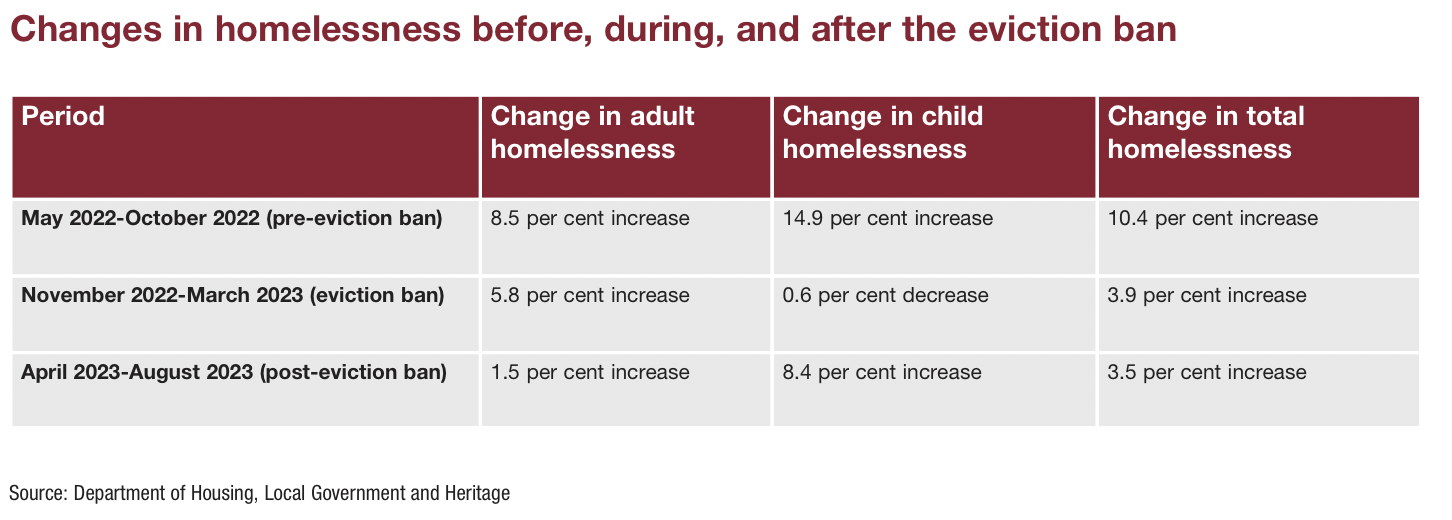
Discussing the end of the eviction ban, O’Brien stated that he had to ensure that any action “need not lead to further loss of property within the private rented sector”, because “we need a private rented sector”. The data appears to suggest that while the eviction ban did not halt the growth of homelessness, it did slow the rate of growth – a necessary first step towards the halting of growth – and stopped some tenants falling by the wayside after being forced out into a housing market and private rented sector that simply does not have the capacity or affordability to meet present demand.



